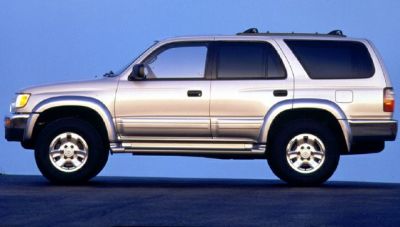 1983 Chevrolet Blazer I Dimensions, Size & Specs
1983 Chevrolet Blazer I Dimensions, Size & Specs
Measurements of the 1983 Chevrolet Blazer I, engineered for optimal performance and comfort
| Dimensions | |
|---|---|
| Length: | 4491 mm176.8 in14.7 ft |
| Width: | 1661 mm65.4 in5.4 ft |
| Height: | 1633 mm64.3 in5.4 ft |
The Chevrolet Blazer I, produced from 1982 through 1993, represents the first generation of Chevrolet's classic SUV lineup. Introduced in the early 1980s, the 1983 model year Blazer I features a traditional full-size SUV design tailored for both utility and on-road comfort. Measuring 4491 millimeters (approximately 176.7 inches) in length, the Blazer I offers ample space that balances maneuverability with interior room. Its width is 1661 millimeters (about 65.4 inches), and it stands 1633 millimeters tall (roughly 64.3 inches), contributing to a sturdy yet accessible profile favored during its production era. These dimensions support a versatile cabin setup suitable for passengers and cargo alike, making it a compelling choice for SUV enthusiasts seeking a vintage American vehicle. The Blazer's moderate width and height ensure a stable driving experience, while its full-size length underlines its capability and presence on the road. Overall, the Chevrolet Blazer I (1983) remains a noteworthy SUV from the 1980s with dimensions that reflect its role as a practical and reliable sport-utility vehicle.
Discover the standout features that make the 1983 Chevrolet Blazer I a leader in its class
Have a question? Please check our knowledgebase first.
The Chevrolet Blazer I (1983) measures 4491 mm (176.7 inches) in length, 1661 mm (65.4 inches) in width, and stands 1633 mm (64.3 inches) tall. These dimensions give it a compact yet sturdy SUV profile typical of early 1980s sport-utility vehicles.
The Chevrolet Blazer I typically features a wheelbase of around 2731 mm (107.5 inches), which contributes to its balanced ride and handling characteristics. While exact ground clearance can vary by trim and tire choice, it generally offers around 220 mm (8.7 inches), making it suitable for moderate off-road use and urban driving alike.
At 1661 mm (65.4 inches) wide, the Blazer I is narrower than most modern midsize SUVs, which often measure over 1900 mm (75 inches) in width. This narrower stance makes the Blazer I easier to maneuver in tight urban environments and parking spaces, though it also means less interior shoulder room compared to contemporary models.
With a height of 1633 mm (64.3 inches), the Blazer I is relatively low-profile for an SUV. This height allows it to fit comfortably in most standard residential garages, which often have clearances of around 2 to 2.1 meters (78 to 83 inches). Thus, owners usually do not face height clearance issues when parking indoors.
The curb weight of the 1983 Chevrolet Blazer I ranges approximately between 1800 kg to 2000 kg (3970 to 4410 lbs) depending on configuration. This moderate weight contributes to solid road handling and stability while providing robustness for off-road conditions. Its weight distribution and powertrain help balance traction and fuel efficiency typical for SUVs of its era.
The Chevrolet Blazer I offers a spacious cabin for its class in the early 1980s, with seating for up to five passengers. Although its narrower exterior limits shoulder room compared to larger SUVs, interior space was designed to prioritize passenger comfort and cargo utility, making it competitive with models like the Ford Bronco and Dodge Ramcharger during the same period.
Yes, the Chevrolet Blazer I fits well into a standard residential garage. With overall dimensions of 4491 mm (176.7 inches) in length, 1661 mm (65.4 inches) in width, and 1633 mm (64.3 inches) in height, it is smaller than many modern SUVs, making garage parking convenient without requiring modifications or special accommodations.
The Chevrolet Blazer I, produced from 1982, is the original generation of the K5 Blazer lineup, thus it has no predecessor model to compare with directly. However, it established the baseline for later generations by combining a shorter wheelbase in an SUV platform derived from pickup trucks, emphasizing off-road-capability combined with street comfort—traits that defined future iterations.
Dimensionally, the 1983 Chevrolet Blazer I (4491 mm length, 1661 mm width) is somewhat similar but slightly smaller in width compared to the 1980s Ford Bronco, which is around 1930 mm wide (76 inches). Functionally, both serve as rugged off-road capable SUVs with a strong truck-based chassis. The Blazer I tends to be lighter and more compact, aiding maneuverability, while the Bronco offers a bit more interior space and towing capacity.
The Chevrolet Blazer I served as a versatile SUV during its production from 1982 to 1993, popular for its combination of rugged off-road capability and urban practicality. Key features included a robust body-on-frame construction, multiple engine options including inline-six and V8, and available four-wheel drive. It was widely used for daily driving, family transportation, outdoor recreation, and light towing. Its moderate dimensions made it accessible for suburban families while retaining toughness for off-pavement adventures.
Discover similar sized cars.

| Production: | 1995-1999 |
|---|---|
| Model Year: | 1996 |
| Length: | 4539 mm178.7 in |
| Width: | 1689 mm66.5 in |
| Height: | 1689 mm66.5 in |
